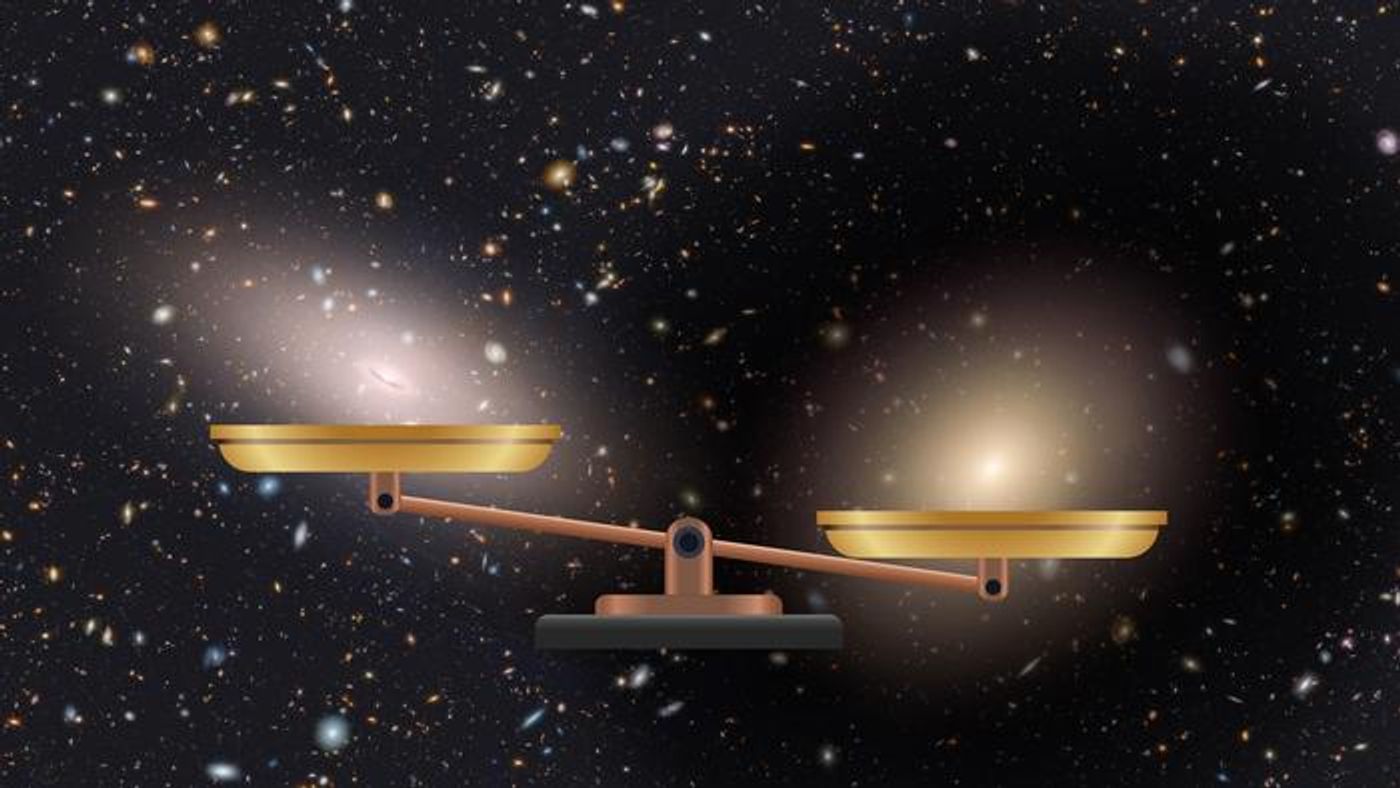The Mystery of Galaxy NGC 1277: First of its Kind Potentially Without Dark Matter
A recent study published in Astronomy and Astrophysics examines how a distant galaxy potentially doesn’t possess dark matter, a mysterious substance that researchers hypothesize could comprise approximately 27 percent of all the matter in the universe. The galaxy, NGC 1277, is located approximately 240 million light-years from Earth, and whose mass is estimated to be several times larger than our Milky Way Galaxy.
Illustration comparing a traditional galaxy (ESO 325-G004) surrounded by a halo of dark matter (right scale), and the galaxy NGC 1277 (left scale), in which the investigation of its mass distribution unveils potentially zero presence of dark matter. (Credit: Design: Gabriel Pérez Díaz (IAC). Image of NGC 1277: NASA, ESA, and M. Beasley (IAC). Image of ESO 325-G004: NASA, ESA, and The Hubble Heritage Team (STScI/AURA); J. Blakeslee (Washington State University))
This study was led by Dr. Sebastién Comerón, who is an extragalactic astronomer assigned to the Universidad de La Laguna (ULL) and the Instituto de Astrofísica de Canarias (IAC) and holds the potential to challenge longstanding cosmological theories regarding dark matter. Additionally, it could also help researchers gain greater insights into the formation and evolution of older galaxies throughout the universe.
NGC 1277 is known as a “relic galaxy” meaning it has never interacted with neighboring galaxies and likely formed when the universe was very young. In contrast, our Milky Way interacts with several dozen other galaxies known as the Local Group, which makes NGC 1277 a rare find among billions of galaxies throughout the cosmos.
“The importance of relic galaxies in helping us to understand how the first galaxies formed was the reason we decided to observe NGC 1277 with an integral field spectrograph” said Dr. Comerón. “From the spectra we made kinematic maps which enabled us to work out the distribution of mass within the galaxy out to a radius of some 20,000 light years.”
After investigating the size and composition of NGC 1277, the researchers found its mass is comprised of only 5 percent dark matter but could also possess zero percent based on their observations. This challenges current cosmological models, which state a galaxy of NGC 1277’s mass should contain at minimum 10 percent dark matter with 70 percent at maximum.
"This discrepancy between the observations and what we would expect is a puzzle, and maybe even a challenge for the standard model,” said Dr. Ignacio Trujillo, who is a researcher at the IAC and the ULL, and a co-author on the study.
The team plans to conduct follow-up observations using the WEAVE instrument which is mounted William Herschel Telescope (WHT) at the Observatorio del Roque de los Muchachos, on La Palma in the Canary Islands.
If these follow-up observations confirm that NGC 1277 does not possess any dark matter whatsoever, this could strongly question not only standard dark matter models, but alternative models, as well.
What new discoveries will researchers make about NGC 1277 and its dark matter composition in the coming years and decades? Only time will tell, and this is why we science!
As always, keep doing science & keep looking up!
Sources: Astronomy and Astrophysics, EurekAlert!, NASA, NASA (1), Universidad de la Laguna, Wikipedia, Atlassian









